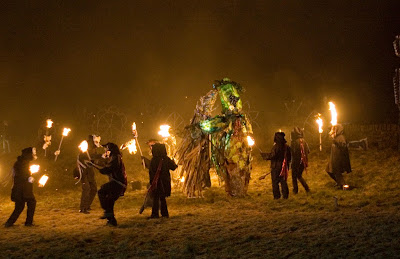One City - Two Cathedrals Part II: St. Patricks
Written by MikeH
 |
| St. Patrick's Cathedral |
Like Christ Church, St. Patrick’s is rich in architectural design with a vibrant history. My experience inside was amazing and on first entering what struck me the most was the mass of colours all around and the abundance of monuments instead of Saints. It is a place where I could spend hours exploring, reading, learning and soaking up this new atmosphere within a protestant Church.
In this post I hope to cover the main aspects of the Cathedral, and as with Christ Church, it is impossible to include nearly one thousand years of historical facts and details.
Historical Background
 |
| Interior View |
Ireland's largest church is St Patrick's Cathedral, built between 1191 and 1270. It is said to be the earliest Christian site in Ireland. According to legend, it was here that St. Patrick himself reputedly baptised the local Celtic chieftains, using a well in the nearby St Patrick's Park, which was once a slum but is now a lovely place to visit.
The first record of there being a building was in the year 890 when Gregory, King of Scotland, visited a church. The decision to build a church here was probably based on the possible connection with Saint Patrick. This site was then chosen in 1190 by Archbishop John Comyn to be raised to Cathedral status and eventually the small wooden church was replaced with today’s structure. Again it is likely that Comyn made the decision to elevate Saint Patrick’s on the supposed connection with the saint.
There is almost no precedent for a two-cathedral city, and some believe it was intended that St Patrick's, a secular cathedral, would replace Christ Church, a cathedral managed by an order. A confrontational situation persisted over the following decades with considerable tension, after which the dispute over St. Patrick's, was eventually settled, by the signing of a six-point agreement in the year of 1300 called Pacis Compositio.
Like Christ Church Cathedral, the building has suffered a rather dramatic history of storm and fire damage and has been altered several times. Some interesting historical facts are for example that Oliver Cromwell, during his 1649 visit to Ireland, converted St Patrick's to a stable for his army's horses, an indignity to which he also subjected numerous other Irish churches.
 |
| Monuments |
Jonathan Swift, author of Gulliver's Travels, was the dean of the cathedral from 1713 to 1745, but after his tenure the cathedral was neglected until its restoration in the 1860s. Also like Christ Church, St Patrick's is a Church of Ireland cathedral – which means that overwhelmingly Dublin has two Anglican cathedrals!
Inside Saint Patrick
Entering the cathedral from the south western porch it is possible to view, almost immediately, the graves of Jonathan Swift and his long-time companion Esther Johnson. On the wall nearby are Swift's own (self-praising) Latin epitaphs to Esther and himself along with a bust of Swift. The huge Boyle Monument to the left was erected in 1632 by Richard Boyle, Earl of Cork, and is decorated with numerous painted figures of members of his family.
 |
| Graves of Jonathan Swift and Esther Johnson |
At the West End of the Cathedral is the window known as the Saint Patrick’s Window. This tells the story of the life of Saint Patrick in 39 different episodes beginning with his kidnapping from Wales and going right up to his death and burial in Ireland. The window in the North Transept is dedicated to Edward Cecil Guinness, Lord Iveagh and son of Benjamin Lee Guinness.
A recently opened section is The Lady Chapel, which was built in 1270, by Archbishop Fulk de Saunford and like the rest of the building, was restored in the 19th century. From mid-17th to the early 19th century, the Chapel was known as the ‘French Chapel’ as it was used by Huguenots (French Protestant refugees) after they came to Ireland following the revocation of the Edict of Nantes. The chapel walls are dedicated to Saint Peter on the North side, and Saint Stephen on the South side. Other objects of interest in the Lady Chapel and the side chapels include the chair which is said to have been used by King William III at a service of celebration after his victory at the Battle of the Boyne.
Standing in the North Transept of the Cathedral is the Tree of Remembrance, a monument made out of steel and surrounded by barbed wire. This monument is in honour of the World War One centenary to help remember all who were affected by conflict. Visitors are invited to remember a loved one who has been affected by conflict by filling out a small leaf shaped tag and tying it to the barbed wire. Over time, the barbed wire will be covered with messages of hope.
 |
| Cathedral Windows |
Also in the North Transept one can find the Door of Reconciliation. According to history, in 1492 two rival Irish families, the Butlers of Ormonde and the FitzGeralds of Kildare, shook hands through a hole cut in the door in order to make peace.
And of course, the tour does not end here! Other sections, monuments and historical facts about this Cathedral such as the Choir and Grammar Schools, the Choir, the Organ or the Ancient Tour, deserve more than one post. Definitely, St. Patrick’s Cathedral is a must-see if you ever visit Dublin.
 |
| Cathedral Floor |
It is part of the historic vibrancy of the city. Personally, I will be certainly revisiting this magnificent temple on my next return to the historic city of Dublin.
The following Websites provide valuable information about St. Patrick’s Cathedral:
St. Patrick’s Cathedral by Drone
Images: By the Author
Video: Youtube by Sky Pixels Ireland
Video: Youtube by Sky Pixels Ireland



Comments
Post a Comment